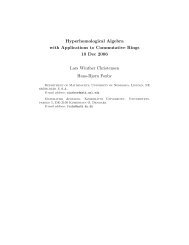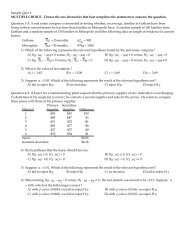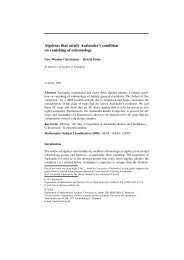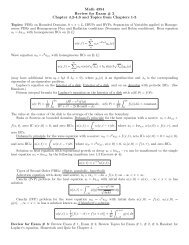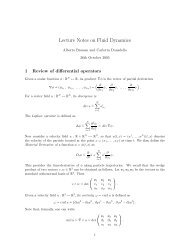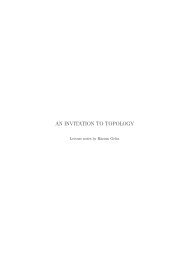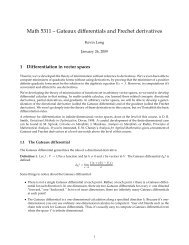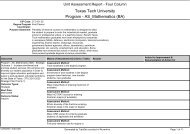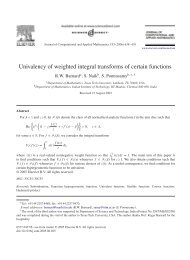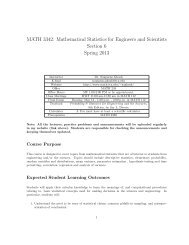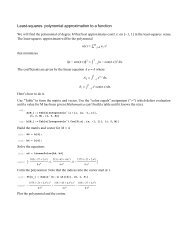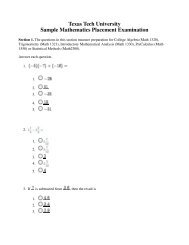QUANTUM MECHANICS AND NON-ABELIAN THETA FUNCTIONS ...
QUANTUM MECHANICS AND NON-ABELIAN THETA FUNCTIONS ...
QUANTUM MECHANICS AND NON-ABELIAN THETA FUNCTIONS ...
Create successful ePaper yourself
Turn your PDF publications into a flip-book with our unique Google optimized e-Paper software.
<strong>QUANTUM</strong> <strong>MECHANICS</strong> <strong>AND</strong> GENERALIZED <strong>THETA</strong> <strong>FUNCTIONS</strong> 9The Hilbert space consists of the holomorphic sections of a line bundlewhich is the tensor product of a line bundle of curvature Nω and a halfdensity(the necessity of which is explained in [23]). For the half-density wechoose the trivial line bundle defined by the 1-form dz, and simply ignoreit.A holomorphic line bundle with curvature Nω can be obtained by factoringthe trivial line bundle on R 2 by a cocycle Λ : R 2 × Z 2 → C ∗ of theformΛ((x,y),(m,n)) = α(m,n)e 2πiN( τ 2 n2 −n(x+τy)) = α(m,n)e 2πiN( τ 2 n2 −nz) .where α is a character of Z 2 which parametrizes a flat line bundle on thetorus, i.e. α(m,n) = e 2πi(mµ+nν) for some real numbers µ and ν. Theholomorphic sections of this line bundle are the classical theta functions.They can be identified with holomorphic functions on the plane that satisfythe periodicity conditionf(z + m + nτ) = α(m,n)e 2πiN(τn2 −2nz) f(z).To simplify the discussion, we restrict ourselves to the case µ = ν = 0, whenα ≡ 1.An orthonormal basis of the Hilbert space consists of the so called thetaseries. To specify them one needs a rigid structure on the torus. Thisrigid structure consists of the images on the torus of two generators of itsfundamental group. The first curve cuts the torus open into an annulus,while the second keeps track of twistings (see Figure 1, the dotted line keepstrack of the twistings). The group of transformations of rigid structuresis PSL(2, Z), therefore the complex tori endowed with rigid structures areparametrized by the upper half-plane. They form the Teichmüller space ofthe torus. For a point τ in the upper half-plane, the corresponding thetaseries areθ τ j (z) = ∑ n∈Ze 2πiN h 12( j N +n)2 (a+bi)−(x+ay+biy)( j N +n)i= ∑ n∈Ze 2πiN h τ2( j N +n)2 −z( j N +n)i , j = 0,1,2,... ,N − 1.We extend this definition of theta series to all indices j by the periodicitycondition θj+N τ (z) = θτ j (z), namely we work with indices modulo N.Figure 1Let us now turn to the operators. The only exponentials on the planethat are double periodic, and therefore give rise to functions on the torus,



